SUMMARY
This is AI generated summarization, which may have errors. For context, always refer to the full article.
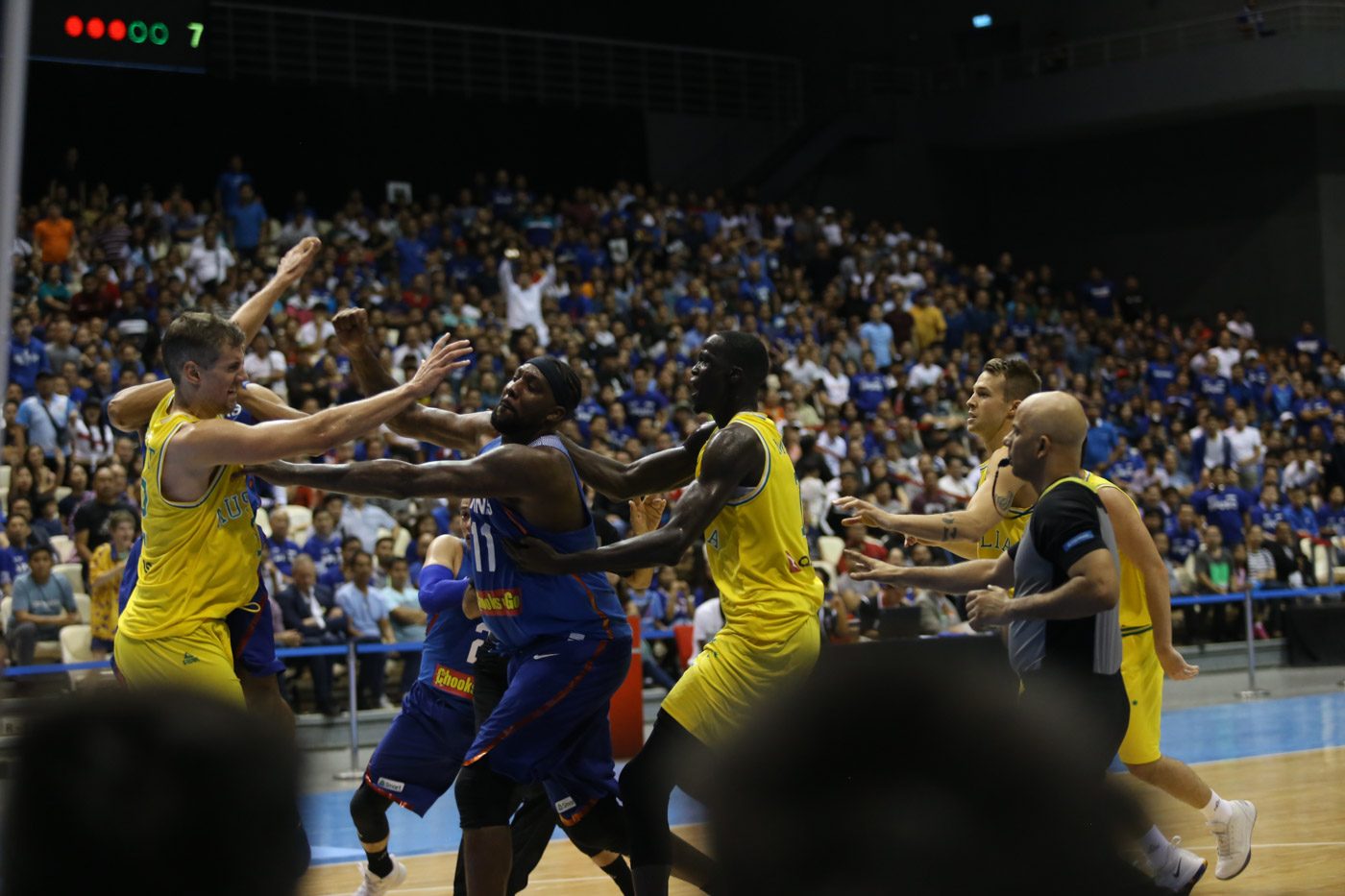
MANILA, Philippines – Before the shove by RR Pogoy that commenced one of the most unflattering moments in the history of Philippine basketball, before the free-for-all ruckus that goes against everything this country stands for when it comes to its hospitality, and even before the defiance of Gilas head coach Chot Reyes, Terrence Romeo, and a number of guys on the team after the dust had settled, this much was beyond reproach:
The Philippines was getting its ass kicked by Australia. On the court. Playing actual basketball.
To a degree, weighing the importance of that feels moot given the events that transpired after the Philippine national team went down by 31, 79-48, with 4 minutes left in the 3rd quarter, and the punishments that could result from it. But this is still the world stage, with a trip to the 2019 FIBA World Cup on the line – something our boys prepare years for – so it’s more than worth mentioning.
Take the basketball part of it into account, and it makes you realize how much more unbecoming it is of the national team to participate in the actions that stole the headlines not just here or in Australia, but all over the world.
Can’t beat them by putting the ball in a hole more times, so we revert to throwing fists, chairs, and water bottles?
That’s not a cry of national pride or “Puso.”
It’s a display of arrogance and a sign that maybe, just maybe, we’re not yet ready to earn the respect in the global hoops stage that we’ve craved for so long.
More on that later. For now, let’s turn to the actual reason why there was a game being played in Bocaue, Bulacan.
Clinic
The Boomers, entering the Philippine Arena on Monday, July 2, after being dealt a painful loss by Japan, looked absolutely prepared to take on a Philippine team that was coming in with confidence following a dominant victory against Chinese-Taipei, not to mention the support of an entire nation behind them.
Gilas kept it close for one quarter, until Matthew Dellavedova, James Goulding, and the rest of Australia provided the Philippines with a clinic on what it takes to make it to the highest level of FIBA competition.
While Romeo, Jayson Castro, and even former NBA player turned naturalized Filipino Andray Blatche had an immensely difficult time penetrating the stifling defense of the longer and bigger Australians, the Boomers ran circles around the Gilas defense.
Like clockwork, Dellavedova and the other guards of their national team attacked the Philippines’ shorter defenders and made the basketball look like a boomerang with how often and quick it was changing hands. Confused, the Philippines spent more time running back to open Australian shooters instead of putting hands on their faces (well, at least not yet) to contest jumpers, resulting in 3-pointers and jumpers hitting nothing but the bottom of the net.
Every time June Mar Fajardo, the clear-cut future of the Philippine basketball program, scored in the paint to spark momentum for the trailing national team, Australia quickly derailed it by playing simple basketball that cerebrally sliced through Gilas’ resistance like a hot knife through butter. While it was easy for the Boomers to predict who the Philippines would go to for a basket, it remained a mystery the other way around.
Temperamental
By the end of the game, which finished via default, Australia was on top 89-53 after converting 13-of-26 from downtown, shooting 61.5% from the floor, and dishing out 24 assists to only 9 turnovers. In comparison, Gilas hit only 5-of-18 from long range, converted only 40% of their total shots, and accounted for only 10 assists while turning the ball over 18 times.
By halftime, the score was 57-32 in favor of Australia. Everyone knew the game was over.
What they didn’t know, was that another game was only about to begin.
Context is important, especially when you decide what should be right and wrong.
According to Reyes, Australian player Daniel Kickert was “hitting” the Philippines’ players during warm-ups. But hitting how, exactly? Is there any video footage that proves this? Shouldn’t it have been something reported to game officials before fate gets tempted and tempers flare during the actual contest?
It was evident through the first 3 quarters that the match between both teams – who pride themselves in physical play – was getting more temperamental than usual. Elbows were flying, trash-talking was prevalent, and one team was getting beaten to a pulp – to the point where competitive pride turns into a ticking time bomb. It was the perfect recipe for disaster.
Some of these things are uncontrollable, given the physical nature of the game.
But here’s what can be controlled, and why the actions of the Philippine team were inexcusable: how you react to situations is in your power. More importantly: it defines your character.
And with all due respect to the Philippine national team, which over the past few years have given the citizens of this country many reasons to be proud, Monday night was a display of terrible judgment and principle on their part.
“I understand the disappointment, I understand that some are embarrassed, but you don’t know what happened. You have to be in the team, you have to be in our circle to really understand what went down,” said Reyes, the national team’s head coach.
Group selfie
To a certain degree, he’s right, because national teams are supposed to feel like a brotherhood, and to be fair to Reyes, he gave these comments not long after everything had transpired so emotions may have still been a little rampant. Although in the larger picture, especially with FIBA sanctions on its way, even a simple apology would have been nice. And while Reyes’ fighter spirit has become his basketball personality, a little more sympathy would have been ideal.
And before you dismiss that thought, ask yourself if 5 or 10 years from now, when the Philippines, Australia, and the entire world looks back on what happened Monday night: will they remember it as the day the Philippines flexed their muscles, quite literally, against the bigger, stronger Boomers?
Or will they remember it as the day when Gilas lost its cool, the team’s bench cleared out, leaping punches were thrown, chairs were tossed at heads, and water bottles came flying from the stands?
Oh, and let’s not forget the group selfie, either.
“They started it!” some will argue. That’s not a legitimate excuse. Sometimes, when someone throws a stone at you, you don’t need to throw a larger rock in return. Not when there’s so much more on the line than proving your toughness. It’s better to take the high road.
Hospitality
This doesn’t mean Australia’s national team is absolved of any wrongdoings. Kickert’s decking of Pogoy after the initial shove played as big a part as any, if not bigger, in developing what we’ll now remember as Bulacan Sapakan, and it was absolutely fair to expect Australia to apologize for the roles they played, which, to be fair, they did.
And on the flip side, it was also a great decision by the Samahang Basketbol ng Pilipinas (SBP) to apologize for the actions of the Philippine team, as well:
“As hosts, we regret having breached the bounds of traditional Filipino hospitality. As the national team representing flag and country, we likewise extend our apologies to the Filipino people.
“SBP stands by its conviction that violence has no place in sports.”
Like it or not, the Philippines is more at fault for how badly things escalated on Monday evening, regardless of how much intimidation Australia used to get an upper hand before or during the game. In a sport that’s supposed to bring people from different nations together, in a game when you’re representing your fellow countrymen, you don’t leave the impression of violence.
Does saying Gilas was in the wrong mean you’re not nationalistic? Absolutely not. Romeo is one of the future faces of the Philippines; a player whose talents will bring more eyes to the national team, so it was disappointing to see him tweet out that those who find what Gilas did as embarrassing should convert to Australian – an immature response from an important figure to a volatile situation.
Apology
There’s no doubt that what happened in Bocaue will be remembered for the wrongs reasons. Truth be told, it most likely pulled the national team a few steps back from reaching where it wants to be in the world stage, especially with how much the Philippines promotes itself as the most basketball-loving nation in the world. After what happened against Australia, right now, that may be a little hard to believe.
So what transpires next will be of most importance. What steps will the national team and the powers behind it take as a reaction will say a lot about the group that represents what the Philippines stands for in the world stage. An apology is a great start, but more has to be done. Will certain players be disallowed from participating in international play? Will restraint be a more important focus as the team participates in future competitions?
Keeping mum or sticking to the status quo is an unacceptable course of action. We know that FIBA will undoubtedly not go easy. They will be watching. So will many other nations.
On Monday evening, the national team did not live up to the high standards it should have for itself. Doing the right thing is often more difficult than the alternative, but it’s still the right thing to do.
We can only hope that moving forward, if a similar situation ever presents itself, the outcome will be different.
Because what happened in Bulacan will forever be in history. If we’re lucky, there won’t ever be a sequel. – Rappler.com
Add a comment
How does this make you feel?
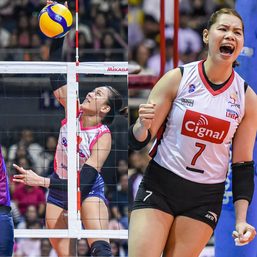
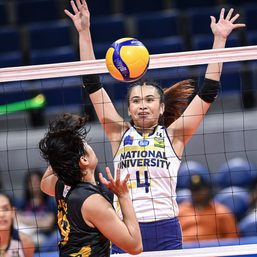
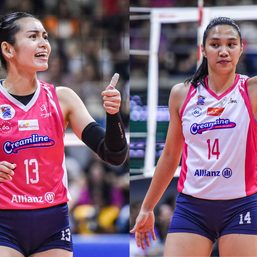
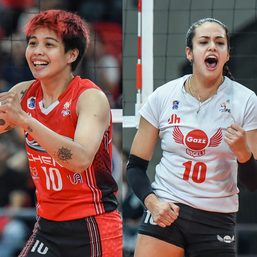
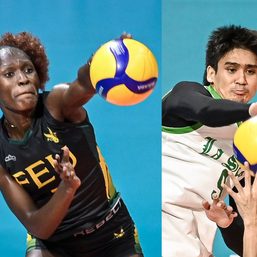
There are no comments yet. Add your comment to start the conversation.